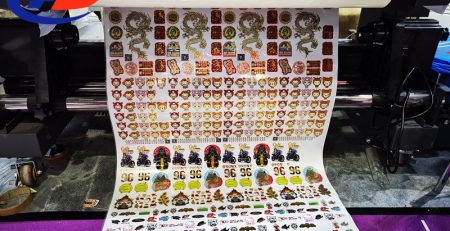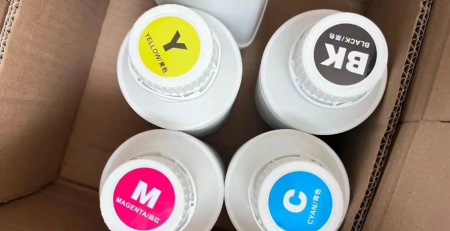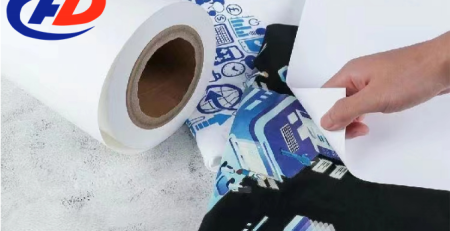Should I choose cold peel DTF film or hot peel DTF film for heat transfer film? Which is better to peel?
DTF film has a wide range of uses, and its technology and effects are constantly being updated. What remains unchanged is that when the heat transfer film is hot stamped on the substrate, the film needs to be peeled off to complete the entire hot stamping process. However, some heat transfer films need to be hot-teared, while others need to be cold-teared. Many customers will ask why this is? Which membrane is better?
Hot peel film
The main release component of hot tear film is wax, which has poor ink absorption performance and small letters are easy to fall off, but the surface becomes brighter after it is completely cooled.
After transferring the heat transfer to the fabric through a press machine, tear it off while it’s hot to save waiting time.
Tear it off within 9 seconds after turning on the press (ambient temperature 35°C), or tear it off when the film surface temperature is greater than 100°C. If not peeled off in time, the cooling glue will stick to the clothes, causing the clothes and film to tear apart. Difficult, there may be problems such as pattern residue.
Cold peel film
The main release component of cold tear film is silicon, the product has good stability, and the color becomes matte after complete cooling.
Transfer the film first, then gently tear it off after the film has cooled (the temperature is below 55 degrees Celsius), otherwise the heat transfer pattern is likely to be torn.
The difference:
1. Color
The color of the hot-peel film is brighter and the color expression is strong; the color of the cold-peel film is matte and has a stronger texture.
2. Color fastness
The color fastness of the two is almost the same, and both can reach level 3 or above of washability.
3. Pressing requirements
Hot tear film has relatively detailed requirements on pressing time, temperature, pressure, etc. Generally speaking, hot tearing can be easily achieved at 140-160 degrees, pressure 4-5KG, and pressing for 8-10 seconds. The cold tear film has relatively lower requirements.
4. The difference in pulling force
Neither of them will stretch or crack after pressing.
5. The difference in efficiency
If you are pursuing efficiency, you can choose hot-tear film. Cold-tear film is easier to tear when it needs to be lukewarm or cool.
Nowadays, in addition to hot tear film and cold tear film, there is also a more comprehensive film type on the market – hot and cold tear film. Whether it is cold tear or hot tear, it does not affect the quality of heat transfer. HAIYI provides a full range of heat transfer films including cold tear, hot tear, cold and hot tear, etc. Just choose the most suitable one according to your business needs!
What are the reasons why DTF heat transfer printing film is difficult to tear off?
1. The hot stamping temperature is wrong. The hot stamping machine must be adjusted to the appropriate temperature in advance.
2. The hot stamping pressure is not enough. You should increase the hot stamping pressure. The greater the pressure, the better the hot stamping effect will be.
3. The peeling method of the film is not correctly viewed. The hot tear film is used as the cold tear film, or the cold tear film is used as the hot tear film. When using, be sure to distinguish between the cold tear film and the hot tear film.
In summary, accurate temperature, time, and pressure must be determined according to different fabric characteristics. These are the three elements of transfer ironing.
Four basic factors for choosing white ink heat transfer printing film:
1. The pattern after transfer has a texture like PU glue, with strong stretch resilience and no deformation. It feels softer than glue (30~50% softer than the pattern printed with oil-based coating film).
2. It is suitable for most inks on the market. It can print 100% of the ink volume without any ink accumulation or bleeding.
3. The surface of the film is dry and can be sprinkled with 50-200 mesh powder without sticking. The picture is a picture and the powder is powder. Where there is ink, the powder will stick. Where there is no ink, it will be spotless.
4. The release is easy and clean, leaving no ink on the printing film and no layers on the pattern.
If you want to learn more, welcome to visit us. www dot haiyidtf dot com.









